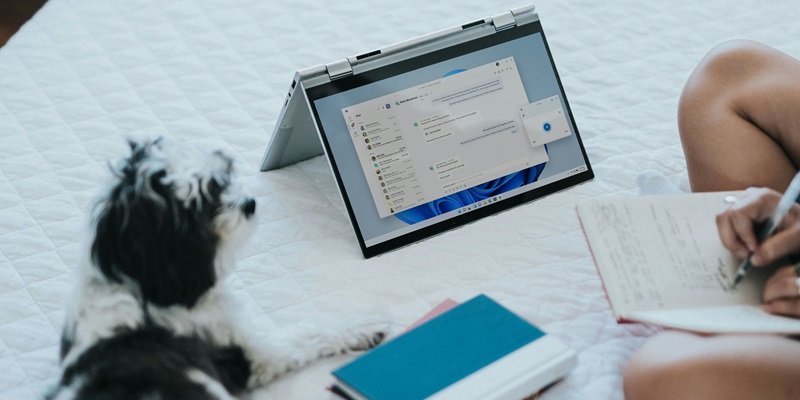The technological landscape is poised on the cusp of another leap forward as speculation mounts over the next iteration of Microsoft’s flagship operating system—presumably titled Windows 13. Although it remains in the conceptual stage, enthusiasts are abuzz with excitement over the possibilities it heralds. The forward-thinking blueprint brought to life by the ingenuity of AR 4789, a designer par excellence, fuels our imagination about what advancements Windows 13 might encompass. As we peek into this potential technological renaissance, we’re reminded that while Windows 13 isn’t a product set in stone, the concept itself sparks ideas about the evolution of user interfaces, system efficiencies, and holistic computing experiences that could define the next generation of PC operating. This vision for Microsoft’s future software endeavors stirs the community, eagerly awaiting what the tech titan might unveil when the time for a new operating system arrives.
The End of an Era and the Dawn of a New Age
Phasing Out Windows 10
As the twilight of Windows 10 approaches, the tech community looks forward with anticipation to the next evolution in Microsoft’s OS lineage. Though not officially confirmed, the idea of Windows 13 stirs excitement, hinting at a blend of practicality and sleek design for tomorrow’s digital needs. The end of support for Windows 10 signals a pivotal moment, one that is seen as an opportunity for groundbreaking advancements in how we interact with our devices.
The world stands on the brink of a transformation as users envision an operating system that not only meets everyday demands but also captivates with its visual appeal. The potential successor to Windows 10, possibly Windows 13, is expected to offer a harmonious transition into an era where technology is seamlessly integrated into every aspect of life. With each passing day, curiosity escalates for an OS that pushes the boundaries of what’s possible, shaping a future where innovation thrives.
Anticipation for Advanced AI Integration
The inevitability of AI integration into operating systems is clear, and it’s widely anticipated that Windows 13 will be infused with AI capabilities. This progression excites both tech professionals and regular users, poised for a revolution in how they interact with their computers. The prospect of an OS that not only responds to instructions but also anticipates user needs, refines workflows, and adapts through continual learning is captivating. Such advancements envisage a future where the line between a computer as a mere instrument and as a collaborative partner is blurred, reshaping our digital experience. The thought of Windows 13 with embedded AI holds immense potential, signaling a leap toward more intuitive, intelligent computing that promises to redefine our engagement with technology.
Embracing the Vision: AR 4789’s Concept Design
Reimagining the User Interface
AR 4789’s conceptualization of Windows 13 is a visionary delight, showcasing an ambition for intuitive and anticipatory user interfaces. The proposed Copilot button stands as a testament to this, promising an unparalleled level of personal assistance within the operating system, potentially transforming how we interact with our machines. The notion of AI-generated wallpapers that shift according to user preferences, emotions, or the time, is an imaginative touch, reflecting a desire for a responsive and evolving desktop environment. This concept is further complemented by the idea of a fully customizable taskbar, which could allow users to align their workspace with their personal workflows and tastes. Such features suggest a cutting-edge platform that not only understands but adapts to the individual’s needs, promising a future where technology is truly attuned to the complexities of human preferences.
A New Level of Customization
The novel concept of allowing users to customize icon styles in AR 4789 marks a quantum leap toward personalization in digital domains. This feature isn’t a mere update; it’s a radical shift empowering users to make their virtual environment as unique as the real one. The future of Windows is envisioned not just through incremental feature enhancements, but through a transformative approach to user agency. Individuals could infuse their devices with their essence, turning routine navigation into a deeply personal experience. The desktop ecosystem is poised to become a vibrant, flexible canvas, reflecting each user’s distinct taste and style, as we move into an era where our digital interfaces are as tailored to our individuality as our physical surroundings. This development in user empowerment brings us to the precipice of a new relationship with technology, where the customization of our digital workspace is as intrinsic and intimate as personalizing our living spaces.
The conceptualization of Windows 13 by AR 4789 is not a confirmed blueprint by Microsoft but rather a collective envisioning, a digital daydream of the future. It’s a blend of beauty, smarts, and personal touch that we crave in our cyber journeys with PCs. This is not just a forecast of what will be but a reflection of what might be, shaped by hope and imagination. Embraced in this vision is an aspiration for a more intuitive and aesthetically pleasing interface that caters to our diverse preferences and needs. Whether this particular vision of Windows 13 morphs into reality or simply fans the flames of innovation, it has certainly struck a chord with its palpable sense of excitement and possibility. Such future imaginings serve both as potential blueprints and muses, inspiring not only anticipation but also creativity in the evolution of our digital environment.

